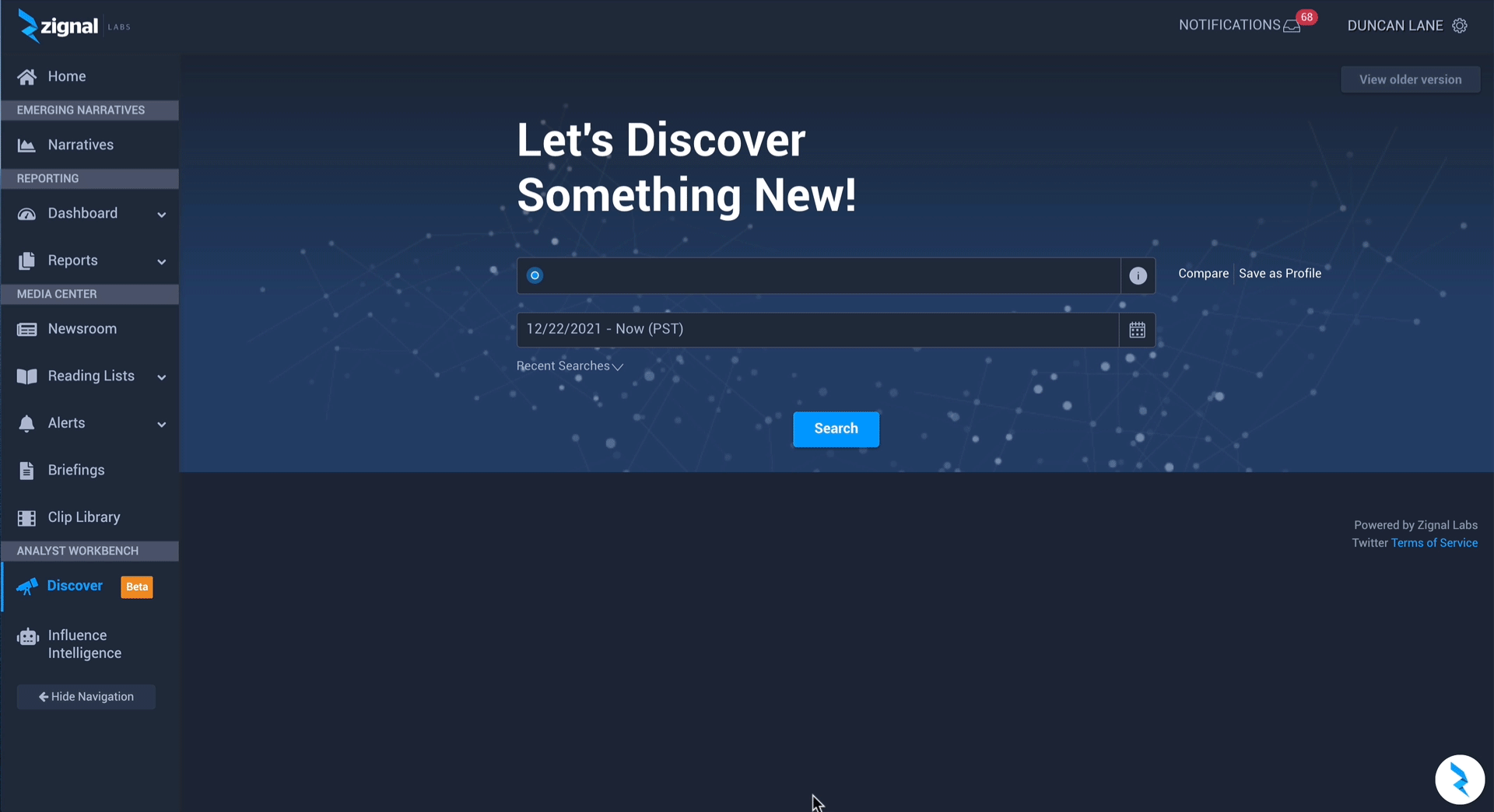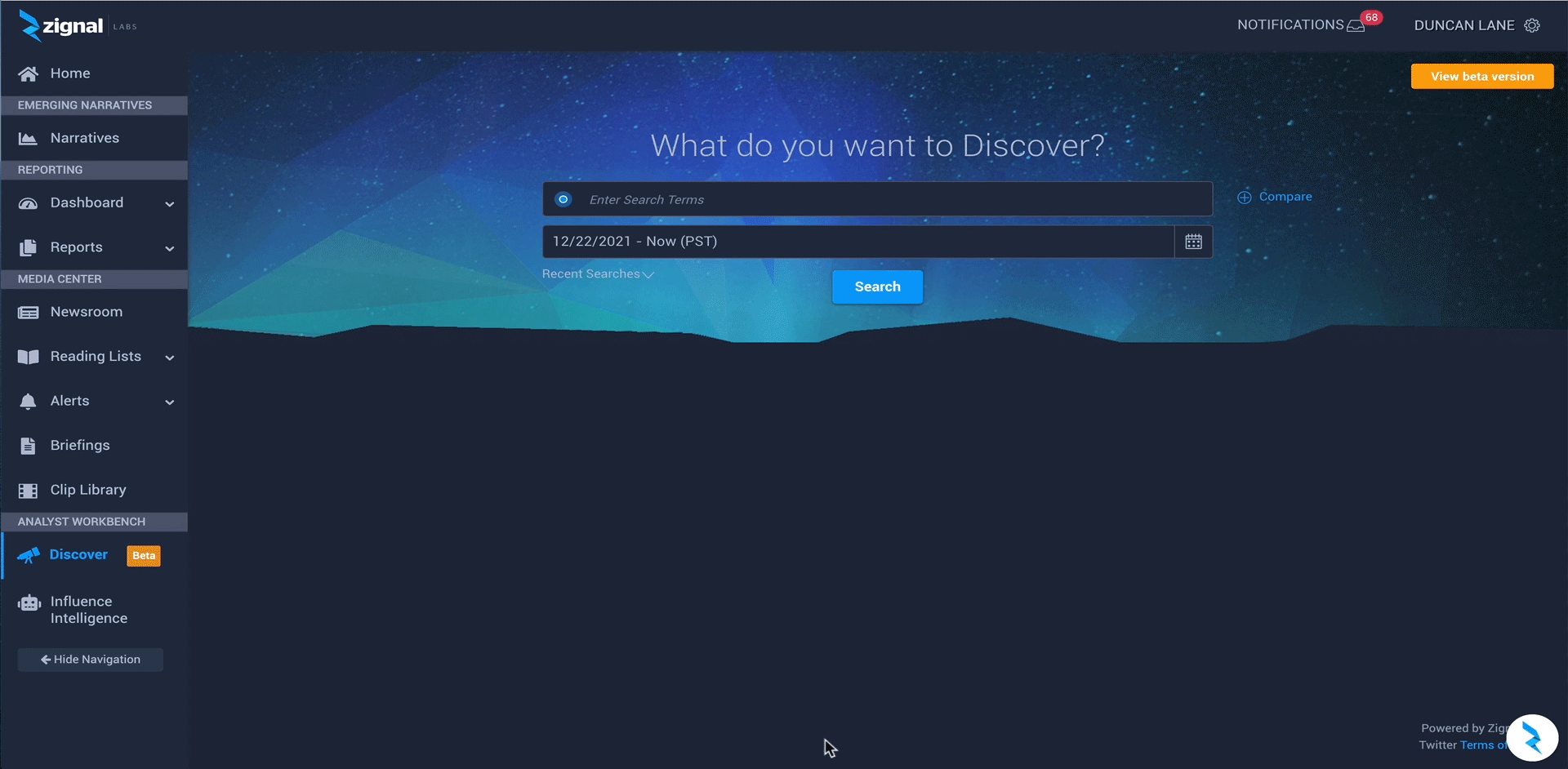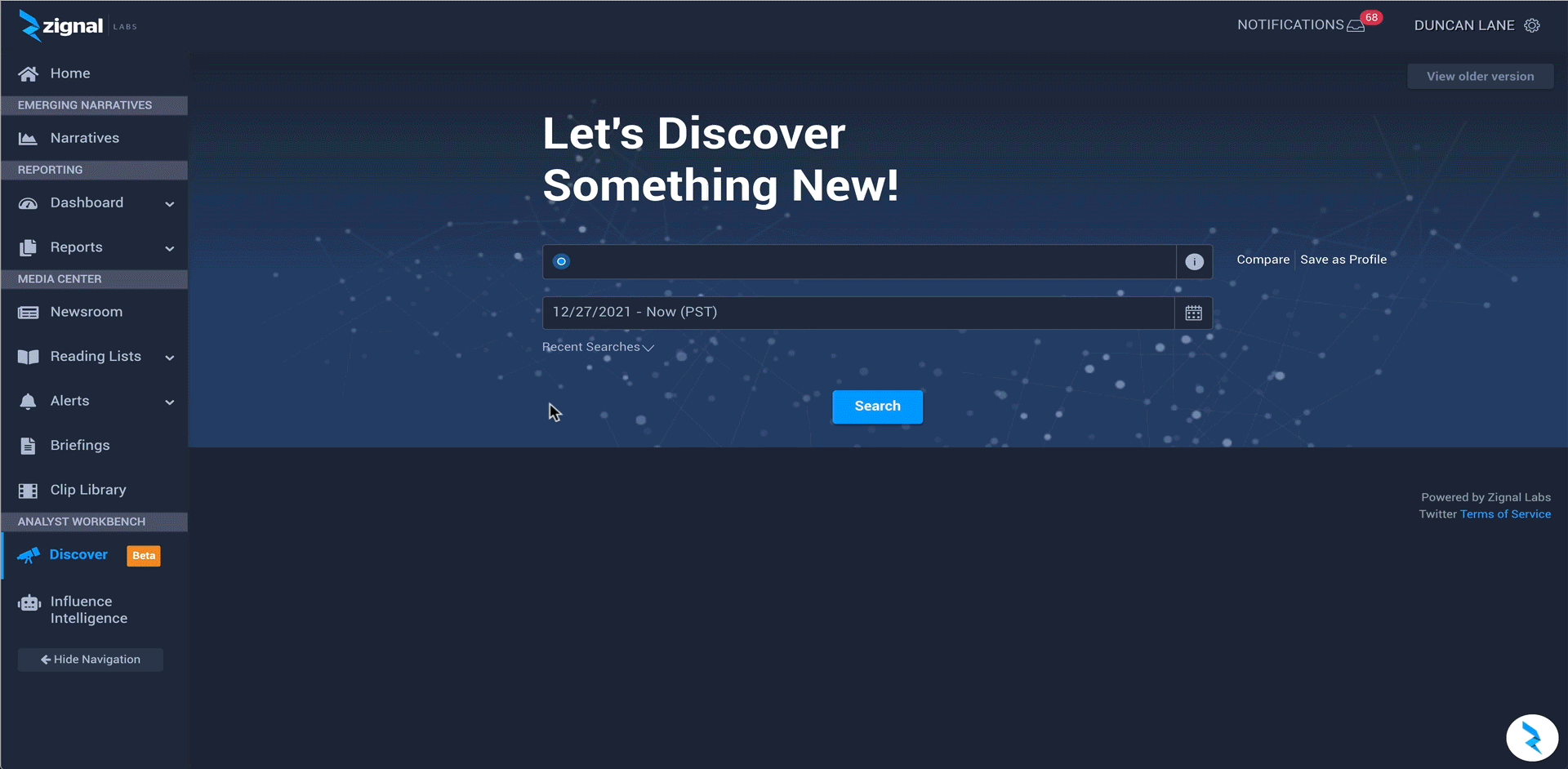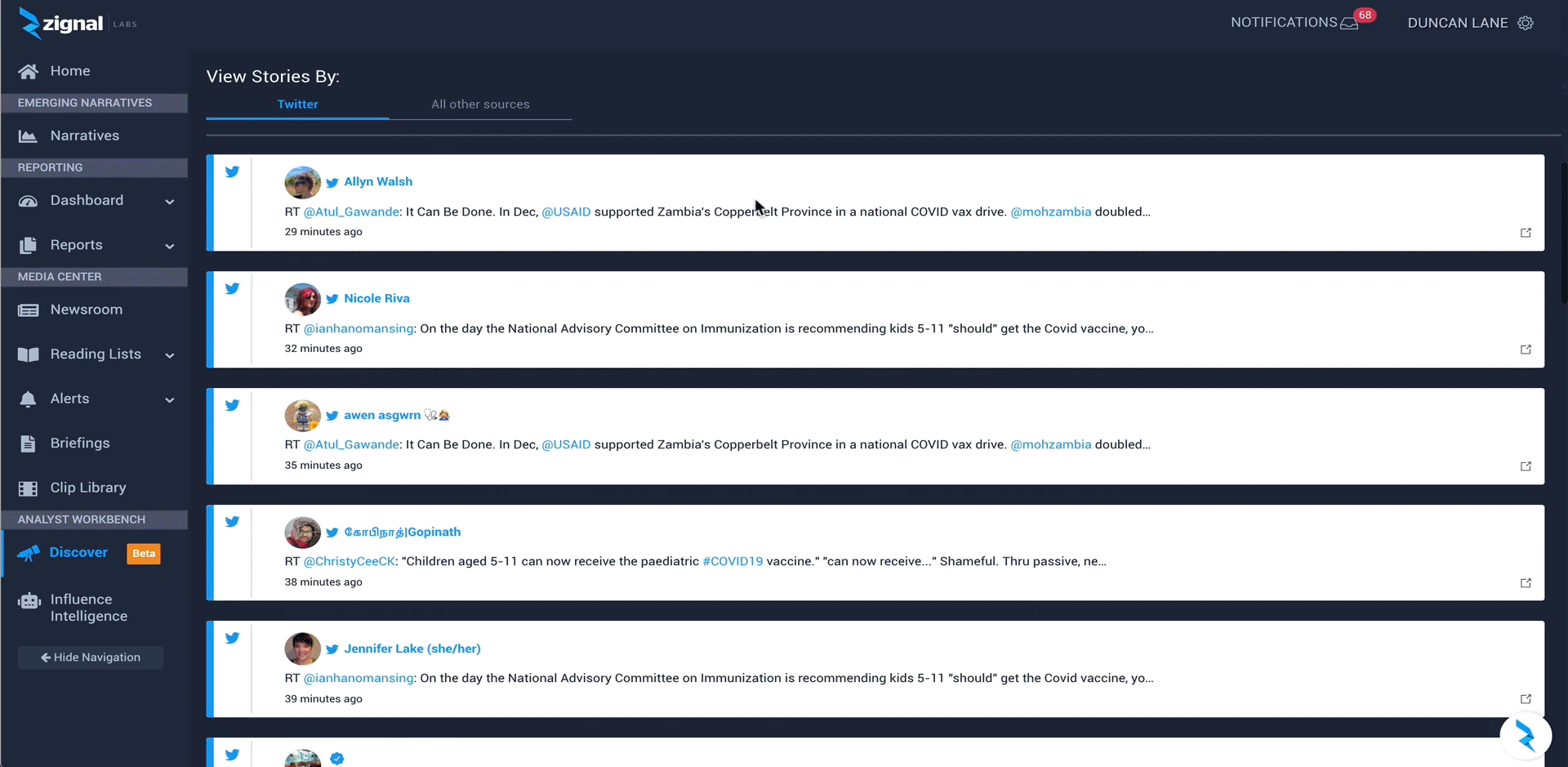
About Zignal Labs
Zignal Labs is a Narrative Intelligence Cloud platform that analyzes billions of digital stories in real-time to help customers discover and manage the narratives that can help or harm them. Zignal’s natural language processing and machine learning algorithms identify risks and opportunities as they emerge, providing insight into how to contend with the narratives that matter.
About the project
Discover is a current feature within our platform. Through simple or complex searches, analysts can validate or disprove assumptions about trending narratives. We have set forth to improve its limitations and enhance its capabilities and support our customer's needs.

My role on the project
As the lead designer on our team, I took ownership of leading the entire project and designing all aspects of it, and caring it through until the final release. This involved full communication, interaction, and collaboration with all cross-functional teams of Product, Engineering, Implementation, Sales, and Marketing.
What we're trying to solve
Discover is a useful analysis tool, but the main problem is that it’s limited to Twitter only. How might we improve the search capabilities and add more data sources into our platform so we can reduce our dependence on Twitter and provide our customers with the best possible narrative intelligence experience?
Business rational
Zignal is extremely dependent on Twitter which leaves us at a competitive disadvantage compared to other players in the media intelligence industry.
As we aim to provide a better understanding of each narrative and the path they have taken, it's essential that our customers are able to search across all sources in a discover like experience
Target users
As we were addressing the needs and some of the frustrations from our existing customers, we wanted to focus on our primary users consisting of Communication Executives, Data Analysts, and Government Analysts.

The current Discover
This is what the current Discover looked like, and in order to try and enhance the capabilities we set forth, I had to address and work with many of the constraints for each of the items.

Solutions
In order to enhance the feature and provide more value to our users, it was crucial to elevate the experience starting with the search capabilities and figuring out how to incorporate more sources and valuable insights.
Improving search capabilities
The first task on my plate was to improve the search capabilities. We actually didn't know what type of search queries our users are trying to type in, and therefore, we wanted to add the ability to write more complex queries, as well as int to the users they can use certain operators.
The first task on my plate was to improve the search capabilities. We actually didn't know what type of search queries our users are trying to type in, and therefore, we wanted to add the ability to write more complex queries, as well as int to the users they can use certain operators.
New improved search experience

Older search experience
As part of some of our user testing, we identified that the majority of our users didn't find the suggested keywords helpful or accurate, and we decided to eliminate that part and replace it with something that would be a lot more helpful.

Adding more sources
In order to break away from constantly getting only search results from Twitter, we needed to find a way to incorporate more sources and figure out how to navigate between the two.
Older Discover results
The old Discover provided you with results from the Twitter source only, and it was difficult to read them due to the misaligned tiled arrangement.

New Discover results
The new Discover provides a horizontal card view that's much easier to scan, as well as configure more sources to be displayed in the same manner.

Prototype Twitter source only

Prototype all other sources

Main takeaways
Working on this project was very challenging as this was already an existing project. Some of many constraints revolved around how can we add improvements without taking away some of the existing behaviors. These constraint have expanded both to the back end on how to incorporate new technologies, as well as the UI itself when it comes to placement and positioning, the type of new components and interactions and finally the amount of real-estate that was available on the screen. We are currently examining and collecting more feedback from our users on the added value and success of this new feature.
Thanks for watching!
If you’d like to collaborate and work together on cool ideas, comment, or simply connect to say hi, please drop me a line at mduncanlane@gmail.com